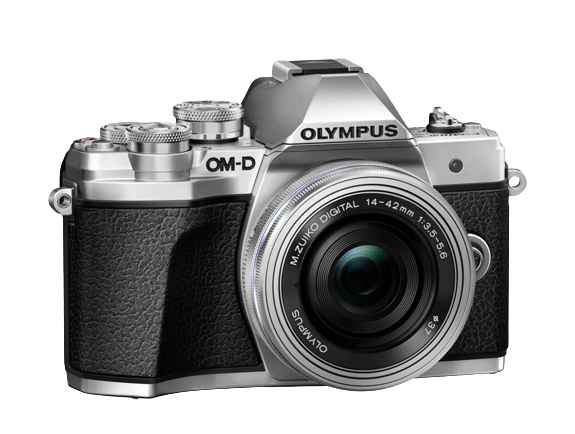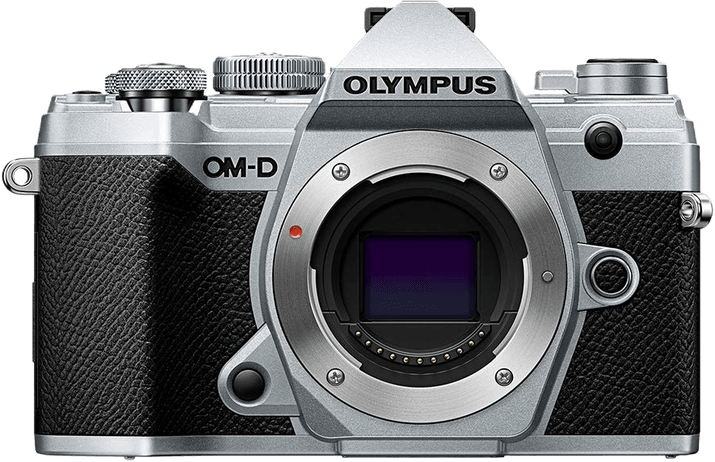Olympus OM-D E-M10 vs OM-D E-M5 Comparison
Olympus OM-D E-M10

Olympus OM-D E-M5

The Olympus OM-D E-M5 narrowly wins with a score of 55/100, just one point ahead of the OM-D E-M10‘s 54/100. Both cameras are mirrorless and have similar dimensions, with the E-M10 measuring 119 x 82 x 46mm and the E-M5 at 122 x 89 x 43mm. They also share a similar weight, with the E-M10 being slightly lighter at 396g compared to the E-M5’s 425g.
The E-M5 has the advantage of being released two years earlier, in 2012, and despite an initial higher launch price of $999, it has managed to stay competitive. On the other hand, the E-M10 was released in 2014 with a lower launch price of $700, making it a more budget-friendly option.
Taking these factors into account, the E-M5’s slight lead in score highlights its enduring appeal and performance, while the E-M10 offers a more affordable choice for those seeking a capable mirrorless camera. Both cameras have their merits, and the choice ultimately depends on individual preferences and budget.
Olympus OM-D E-M10 vs OM-D E-M5 Overview and Optics
The Olympus OM-D E-M10 outperforms the Olympus OM-D E-M5 in optics with a score of 57/100 against 54/100. Both cameras share several common specifications, such as 16.1 megapixels, CMOS sensor type, Micro Four Thirds sensor size, Micro 4/3 lens mount, and image stabilization. However, there are differences that make one camera superior to the other.
The E-M10 has a higher DXOMARK score for its sensor, at 72 compared to the E-M5’s 71, and a TruePic VII processor, as opposed to the E-M5’s TruePic VI processor. These factors contribute to the E-M10’s better image quality and improved low-light performance. The advanced processor also allows for faster image processing, enhancing the camera’s overall performance.
On the other hand, the E-M5 has a slight advantage in shooting speed, with 9 frames per second compared to the E-M10’s 8 frames per second. This difference may benefit photographers who require rapid continuous shooting for capturing fast-moving subjects or action scenes. However, this advantage is minimal and might not be significant enough for some users.
Taking into account the shared features and the advantages of both cameras, the Olympus OM-D E-M10 emerges as the better option for its superior image quality and processing capabilities. While the E-M5 offers a marginally faster shooting speed, this difference is not enough to outweigh the benefits of the E-M10’s advanced processor and higher sensor score. Therefore, the Olympus OM-D E-M10 is the recommended choice for users seeking better optics and overall performance.
Olympus OM-D E-M10 vs OM-D E-M5 Video Performance
The Olympus OM-D E-M10 outperforms the Olympus OM-D E-M5 in video capabilities, with a video score of 57/100, while the E-M5 has a score of 43/100. This 14-point difference reveals the superiority of the E-M10 in terms of video performance.
Both cameras have common video specifications, including Full HD maximum video resolution and 1920 x 1080 maximum video dimensions. Additionally, both cameras have a maximum video frame rate of 30fps. These shared features ensure that both cameras deliver high-quality video outputs.
However, the E-M10 has an advantage over the E-M5 due to its built-in time-lapse functionality. This feature allows the E-M10 to capture a series of images at set intervals and combine them into a video. Time-lapse videos can create stunning visuals, showcasing the passage of time in a unique and engaging manner. The absence of this feature in the E-M5 limits its creative potential for videographers.
On the other hand, the E-M5 does not have any significant advantages over the E-M10 in terms of video capabilities. Both cameras share the same basic video specifications, and the E-M5 does not offer any additional features or improvements.
Given the comparison, the Olympus OM-D E-M10 is the superior choice for videographers due to its higher video score and built-in time-lapse functionality. While the Olympus OM-D E-M5 shares some basic video specifications with the E-M10, it lacks the additional features that make the E-M10 a more versatile and creative tool for capturing video.
Olympus OM-D E-M10 vs OM-D E-M5 Features and Benefits
The Olympus OM-D E-M5 outperforms the Olympus OM-D E-M10 with a feature score of 65/100 compared to the E-M10’s 57/100. Both cameras share some common specifications, such as a 3-inch screen size, touchscreen functionality, flip screen, and lack of GPS.
The E-M5’s advantage lies in its overall higher score, which is due to better features. The E-M10, on the other hand, has a higher screen resolution of 1,037,000 dots compared to the E-M5’s 610,000 dots. This means that the E-M10 provides a clearer and more detailed display, which can be essential for photographers when reviewing their shots or navigating the camera’s settings.
However, the E-M5 has a significant advantage over the E-M10 in terms of connectivity. The E-M5 offers WiFi functionality, which allows users to easily transfer photos to their devices or control the camera remotely. This feature is absent in the E-M10, making it less convenient for users who value seamless connectivity.
The E-M10 still has its merits despite its lower feature score. Its higher screen resolution provides a better user experience when reviewing images and using the camera’s interface. However, the E-M5’s WiFi capabilities make it a more versatile option for photographers who need to share their work or control their camera remotely.
Ultimately, the Olympus OM-D E-M5’s higher feature score reflects its superiority in terms of connectivity and overall performance. The E-M10’s higher screen resolution is a notable advantage, but it may not be enough to sway users who prioritize versatile connectivity options and a more comprehensive set of features.
Olympus OM-D E-M10 vs OM-D E-M5 Storage and Battery
The Olympus OM-D E-M10 and the Olympus OM-D E-M5 both score 21/100 in storage and battery, making them equal in this aspect. They share common specifications, as both cameras have one memory card slot and accept SD, SDHC, and SDXC memory cards. Neither camera has USB charging.
The E-M10 has a slight advantage in battery life, with 320 shots per charge compared to the E-M5’s 310 shots. The E-M10 uses the BLS-5 battery type, while the E-M5 uses the BLN-1 battery type.
The E-M5 does not have any advantages over the E-M10 in storage and battery performance.
Considering these points, the E-M10 is slightly better in terms of battery life, while both cameras have the same storage capabilities. The lack of USB charging is a drawback for both models.
Olympus OM-D E-M10 vs OM-D E-M5 – Our Verdict
Are you still undecided about which camera is right for you? Have a look at these popular comparisons that feature the Olympus OM-D E-M10 or the Olympus OM-D E-M5:

